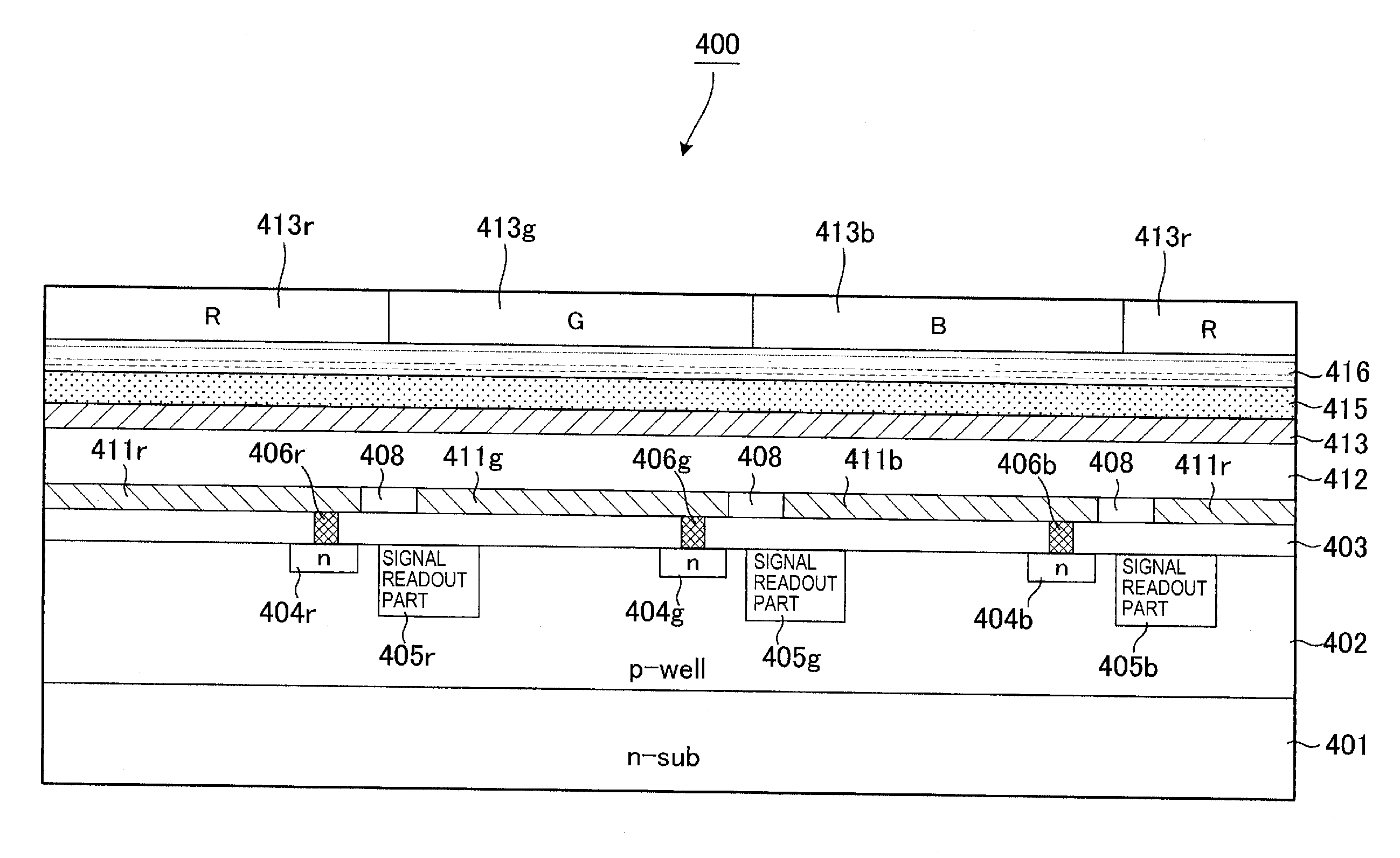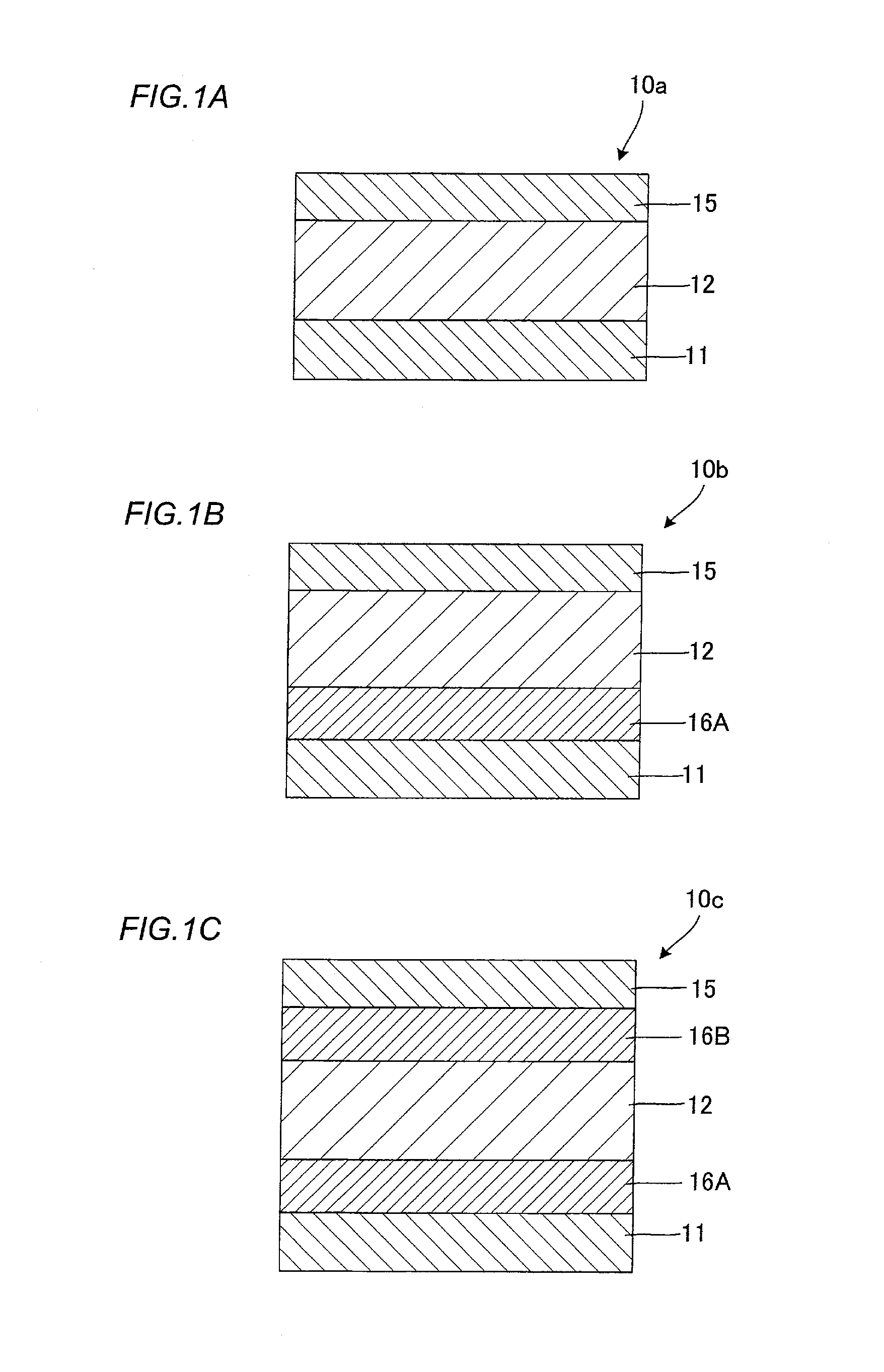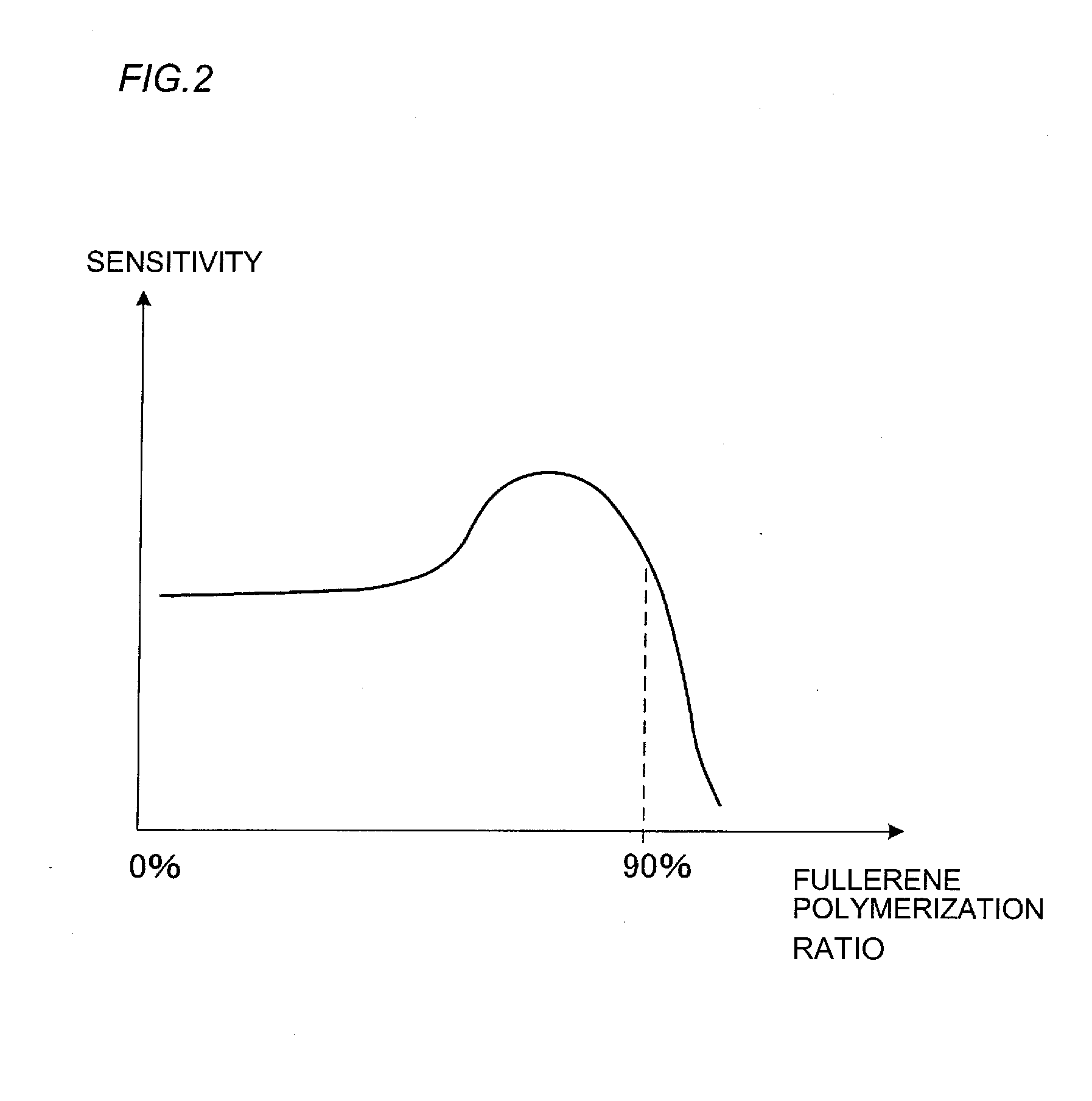Photoelectric conversion device, imaging device and production methods thereof
a technology of photoelectric conversion and imaging device, which is applied in thermoelectric devices, organic semiconductor devices, and nano-informatics. it can solve the problems of reducing the aperture ratio, the photoelectric conversion efficiency is low, and the conventional imaging device called a ccd-type image sensor or a cmos-type image sensor is approaching the limit of its production, so as to achieve high photoelectric conversion efficiency
- Summary
- Abstract
- Description
- Claims
- Application Information
AI Technical Summary
Benefits of technology
Problems solved by technology
Method used
Image
Examples
example 1
Synthesis of Compound 15
[0199]Compound 15 that is one of arylidene compounds was synthesized in accordance with a known method (U.S. Patent Application Publication No. 2005 / 0065351).
(Fabrication of Device)
[0200]On a semiconductor substrate having formed therein a CMOS circuit as a signal readout circuit, an amorphous ITO layer was deposited by sputtering to a thickness of 30 nm and patterned by photolithography to allow one pixel to exist for each photodiode (PD) on the semiconductor substrate, thereby forming pixel electrodes, and a layer of an electron blocking material (EB-3) was deposited thereon to a thickness of 100 nm by vacuum heating deposition. Subsequently, a layer of 400 nm in thickness obtained by co-depositing Compound 15 and fullerene (C60) in a ratio of 200 nm and 200 nm in terms of a single layer was deposited thereon by vacuum heating deposition to form a photoelectric conversion layer. Furthermore, an amorphous ITO layer was deposited as the upper electrode by spu...
example 2
Synthesis of Compound 16
[0202]Compound 16 that is one of arylidene compounds was synthesized in accordance with a known method (U.S. Patent Application Publication No. 2005 / 0065351).
(Identification of Compound 16)
[0203]1H NMR (CDCl3) δ: 7.16 (2H, d), 7.30-7.40 (6H, m), 7.42-7.51 (4H, m), 7.60-7.70 (10H, m), 7.90 (1H, s), 8.09 (2H, m), 8.46 (2H, d), 8.55 (2H, d).
(Fabrication of Device)
[0204]A solid-state imaging device was fabricated in the same manner as in Example 1 except for changing Compound 15 in the organic photoelectric conversion layer 12 to Compound 16.
example 3
Synthesis of Compound 17
[0205]Compound 17 was synthesized in accordance with a known method (U.S. Patent Application Publication No. 2005 / 0065351).
(Fabrication of Device)
[0206]A solid-state imaging device was fabricated in the same manner as in Example 1 except for changing Compound 15 in the organic photoelectric conversion layer 12 to Compound 17.
PUM
 Login to View More
Login to View More Abstract
Description
Claims
Application Information
 Login to View More
Login to View More - R&D
- Intellectual Property
- Life Sciences
- Materials
- Tech Scout
- Unparalleled Data Quality
- Higher Quality Content
- 60% Fewer Hallucinations
Browse by: Latest US Patents, China's latest patents, Technical Efficacy Thesaurus, Application Domain, Technology Topic, Popular Technical Reports.
© 2025 PatSnap. All rights reserved.Legal|Privacy policy|Modern Slavery Act Transparency Statement|Sitemap|About US| Contact US: help@patsnap.com



